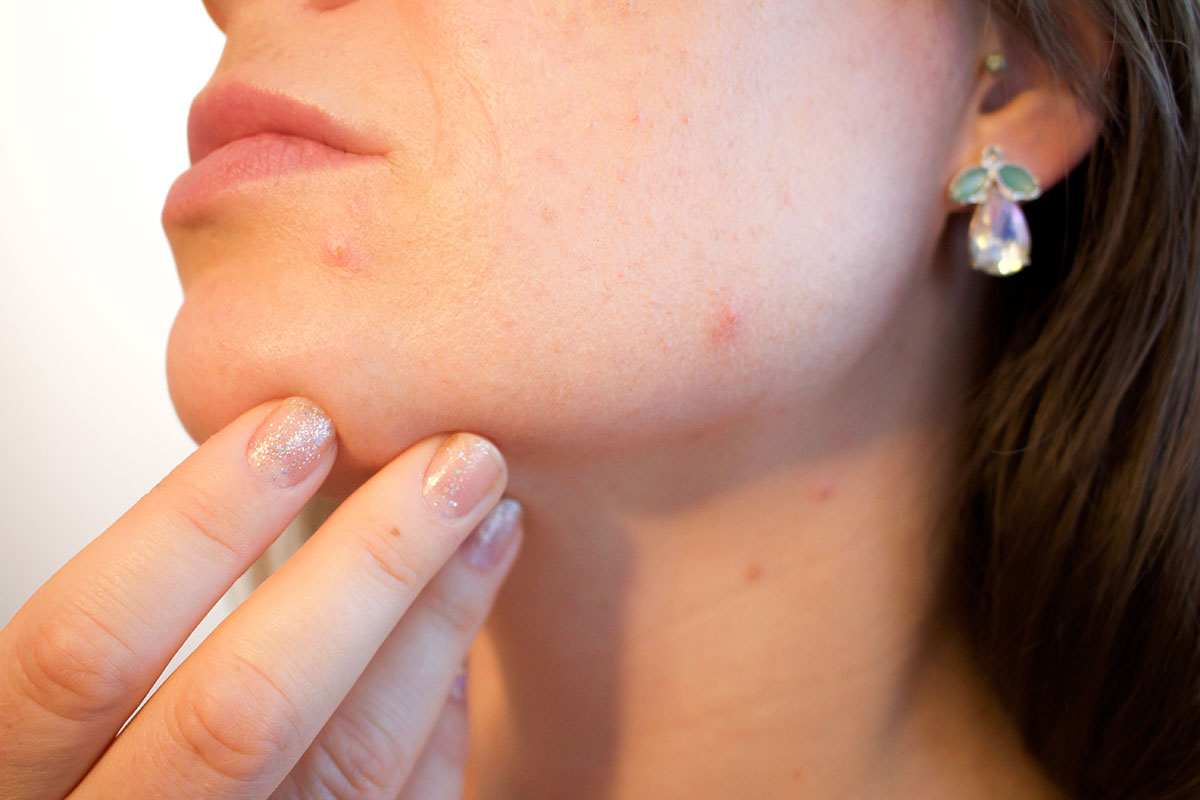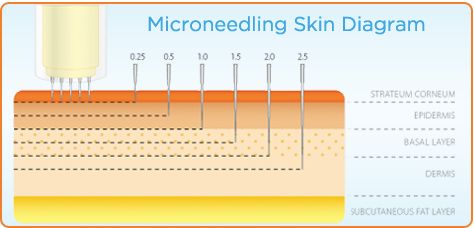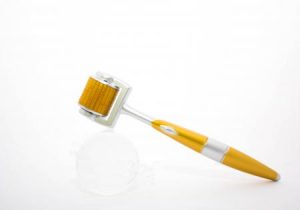The Science Behind Using Derma Rollers for Effective Scar Healing

There have been a number of methods developed over the years for treating different types of scars. One of the newest and most promising is the use of derma rollers.
Covering us literally from head to toe, our skin—comprising the epidermis, basement membrane, and dermis—is the largest organ of the human body. As it is one of the few organs we (and others) can actually see with the naked eye, naturally we want it to look as youthful and attractive as possible. It’s kind of like an advertising billboard signaling our general healthiness to other people. Beauty may be only skin-deep, as they say; but as far as beauty goes, we’ll take what we can.
Among its many functions, skin also serves as our body’s first line of defense in the ongoing battle against microorganisms, ultraviolet rays, physical injury, and the myriad other “slings and arrows” of the outrageous external world. Unfortunately, over time (from the day we are born, actually) the visible outward effects of that battle accumulate on our skin in numerous ways: from old wound scars, to the acne scars of puberty, to postpartum stretch marks, to the wrinkles of old age. No one wants scars and wrinkles; but is there anything one can do about them? As it turns out, the answer is yes: with derma rolling.
To understand the science behind derma rolling and why it is proving so effective in treating various skin conditions, one must first understand a little how the skin works and, more particularly, the nature of scars.
What Is a “Scar”?
Whenever a person’s skin is pierced or cut by a sharp object, is burned by fire or too much sunbathing, undergoes an acne breakout, or suffers some other similar trauma, the unbroken integrity of the skin becomes compromised. In response, the body acts quickly to restore the integrity of that vital protective surface organ. For the sake of survival itself, speed is of the essence; and so the body’s self-healing mechanism remains quite unconcerned with cosmetic or aesthetic considerations as it goes about the serious business of healing the wound ASAP.
The four steps in this healing process are:
• Hemostasis (stopping the flow of blood)
• Inflammation (production of white blood cells and immune cells)
• Proliferation (rebuilding of new tissue made up of collagen and extracellular material)
• Maturation (redistribution and remodeling of collagen once the wound is fully closed)
Depending on the location and severity of the wound, this healing process can take anywhere from days to months to complete. The final result is the formation of scar tissue at the site of the wound or trauma. While the wound may have been effectively closed, in no way can the skin be considered to have been returned to “good as new” condition. This is because the skin at the pre-wound site had been made up of a random but regular “basketweave” pattern of collagen fibers, which give the skin its attributes of smoothness, suppleness, and color uniformity.
In the process of healing, the body replaces this random pattern of collagen fibers with a pronounced cross-linked and unidirectional pattern of fibroblasts, creating a skin surface which looks and behaves differently from the surrounding healthy skin. Thus, one can characterize a scar simply as an over-expression of collagen, resulting in uneven pigmentation, a decrease in elasticity, oversensitivity to sunlight, loss of sweat glands and hair follicles, and other features of normal skin.
Not all scars are created equal. The larger and deeper the wound, the more pronounced the subsequent scar is likely to be. And there are several categories of scars. In the case of hypertrophic scars, for example, the over-production of collagen raises the scar tissue above the surrounding skin. Keloid scars, on the other hand, can expand significantly beyond the site of the original wound. And atrophic scars (typically associated with acne) are the opposite of hypertrophic scars, in that their recessed or pitted appearance is caused by the loss of fat or muscle tissue underneath the site of the wound.
Whatever the type, the challenge to dermatologists has always been: how to minimize or even heal these types of visible, unsightly scars. And that’s where derma rollers come in.
Isn’t “Scar Healing” an Oxymoron?
In a sense, it is. After all, what is a scar but the aftermath of the body’s own natural healing process? At the same time, a scar should also be thought of as a form of “mis-healing,” in that the scar tissue no longer shares the same characteristics as normal, healthy skin. So how do you heal what is already healed?
Traditionally, dermatologists have attempted (with various levels of success) to minimize the appearance of scars with a spectrum of treatments—some of them costly and painful. These include:
• Cosmetic surgery
• Laser removal
• Chemical peels
• Dermabrasion
• Steroid injections
• Creams and ointments
What sets derma rolling apart from these techniques is that it seeks to “teach” the scarred skin to re-heal itself, in a manner of speaking. Just as an orthopedic surgeon may deliberately re-break a bone that has not correctly healed, a derma roller can be used to re-introduce a lesser wound at the scar site in order to encourage the scarred skin to try to heal itself in a more satisfactory manner. In essence, it gives the damaged skin an opportunity to perform a rousing encore.
As an added bonus, derma rolling is a home remedy that is significantly less expensive and quite possibly more effective than more traditional methods of scar healing. And derma rollers do not require a doctor’s prescription!
 What Are Derma Rollers and How Do They Work?
What Are Derma Rollers and How Do They Work?
Simply stated, a derma roller is a small hand-held instrument equipped with a handle attached to a rolling cylinder that is studded with many dozens of extremely fine titanium alloy needles, ranging in length from 0.5 mm to 2 mm. After applying a topical anesthetic cream and antiseptic alcohol to the scar site, the user rolls the instrument in different directions across the scar tissue. Applying the roller over an area of skin 15 times results in about 250 shallow holes per square cm, yet does so without significantly damaging the epidermis.
This microneedling technique (not unlike tattooing) may cause a small amount of bleeding, since the tissue is being pierced by the needles of the derma roller. Nevertheless, despite the bleeding, the procedure truly is minimally invasive and causes relatively little discomfort.
A derma stamp (as its name implies) is a similar type of instrument; the difference being that it is pressed against the skin rather than rolled across it. Yet the principle is the same. Derma stamps are more appropriate in many scar revision applications where a smaller area of skin is to be addressed.
The ReJuveness website offers Derma Rollers and Stamps ranging in length from .2 to 2.0 mm. By way of comparison, .75 mm is the thickness of a credit card.
The number of needles on the roller or stamp affects the level of penetration. Think in terms of a Hindu fakir lying on a bed of nails: fewer needles will penetrate deeper, while more needles will not penetrate as deeply simply because there are so many of them. Thus, more needles will do less lateral damage as they enter and exit the skin.
Typically, derma rollers with needles that are .75 mm or longer may cause bleeding. According to the “older wisdom” regarding derma rolling, the more bleeding, the better the results (the “no pain, no gain” principle). On the other hand, the “newer wisdom” is that the needles do not have to be more than .5 mm in length to do their job, and so bleeding is not necessary for a successful outcome (since the positive effective action of derma rolling occurs in the upper layer of skin, called the epidermis, thereby stimulating the increase in and regeneration of keratinocyte cells rather than fibroblasts and their over-production of collagen).
What we believe, however, it that, for some older scar revision, penetration into the dermis is necessary in order to effectively deliver products like Hyper-Heal Cream under the epidermis. This cream contains phytosphingosine, which not only facilitates the balanced production of collagenase for elimination of old collagen, but also promotes the production of new collagen and its proper placement for the establishment of new scarless tissue.
The Science
In a nutshell, derma rolling (and similarly derma stamping) stimulates a cascade of physiological events intended ultimately to reduce the severity of the scar’s appearance. As this diagram illustrates, the depth and severity of the scar tissue determines which length of derma roller needle may work best for a given situation.

While the exact biological mechanism at play is not yet perfectly understood, here are the basics. It is believed that by piercing the scar repeatedly without fully traumatizing the underlying and surrounding tissue, the microneedles of the derma roller stimulate the formation of new blood vessels (“neovascularization”) and spur the release of beneficial growth factors in the skin beneath the scar tissue. The needles cause not just controlled “wounds” in the skin: that is, they create hundreds or even thousands of microchannels, through which can pass a proliferation of collagen fibroblasts and other growth factors. The difference is that now they will array themselves not in a unidirectional manner (typical of scars), but something more akin to the random basketweave pattern of normal, healthy skin.
In other words, microneedling scarred skin with derma rollers or derma stamps is equivalent to aerating a parched lawn in order to enrich the soil so as to make the grass grow greener, thicker, and more beautiful.
This journal article, “Skin Cell Proliferation Stimulated by Microneedles” (Liebl and Kloth, 2012), published online at the National Center for Biotechnology Information (NCBI, which is part of the U.S. National Library of Medicine, a branch of the National Institutes of Health), lays out in more technical detail the biological mechanism underlying the beneficial inflammatory response that occurs following microneedle perforation of the skin.
Another article, “Microneedling and Its Applications in Dermatology” (Majid and Sheikh, 2014), first published in Dermatology, gives a brief history of microneedling and the biological principles that support the technique. The data that the authors cite point to positive clinical results of derma rolling and suggest multiple applications with few adverse effects in the treatment of various types of scars, including hypertrophic, keloid, atrophic (acne), stretch marks—and even wrinkles!
In summary, derma rollers and stamps work. And when they are used in combination with ReJuveness silicone sheeting and Hyper-Heal Cream, the improvement levels we have seen with microneedling increase dramatically.
♦ ♦ ♦ ♦ ♦
CAUTION: Derma rollers and derma stamps should not be used in the presence of herpes or warts, eczema, psoriasis, or other skin infections; or if you are undergoing anticoagulant therapy or chemo/radiotherapy.
Use only Original Non-adhesive ReJuveness Pure Silicone Sheeting in conjunction with derma-needling. Original ReJuveness sheeting is an implantable medical-grade silicone sheeting, which means the FDA has determined it is the only type of silicone that is safe and non-toxic under the skin. Almost all other brands of silicone scar management products (i.e., silicone creams, oils, gels, and gel sheeting) are toxic when they get under the skin barrier.

